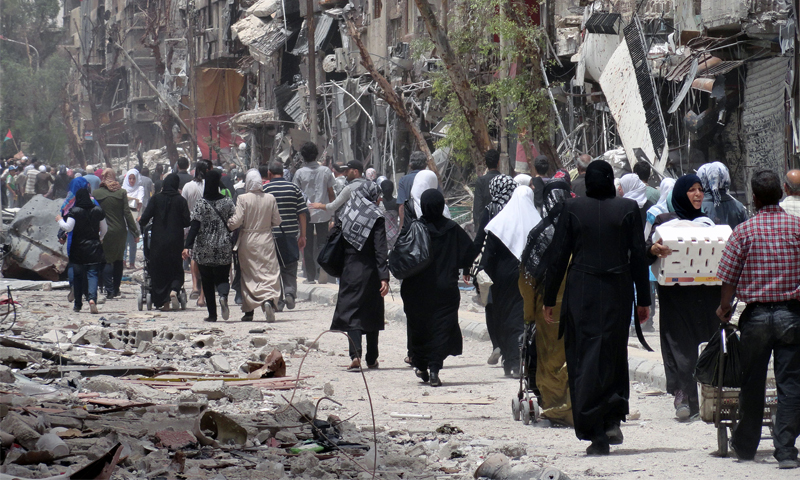



More than 50 Palestinian families in the Yarmouk camp submitted their property ownership proving documents to the Syrian regime’s security checkpoint at the entrance of the 30th Street, to study the possibility of their return to their homes in the camp.
The “Action Group for the Palestinians of Syria (AGPS)” said on 30 September, that 50 Palestinian families had submitted their property legal papers to the Syrian security barrier at the entrance of the 30th Street in the Yarmouk camp to secure accommodation permits in the camp.
The families shall wait for a call from the military security branch in the al-Adawi area in Damascus to receive the security clearance allowing their return to their properties in the camp, provided that the required criteria set by the security apparatus are met.
In the meantime, the residents of the Yarmouk camp continue to demand a return to their properties to end their living and economic sufferings.
The United Nations Relief and Works Agency for Palestine Refugees in the Near East (UNRWA) predicted in its report the “Emergency Appeal 2020” that most of the Yarmouk Camp’s population (between 500,000 and 600,000 persons, of which 160,000 are Palestinian refugees) would remain in displacement.
The report also pointed out the limited access to the camp and the enormous magnitude of destruction there.
According to the UNRWA’s statistics, 91 percent of the Palestinian refugee families in Syria live in absolute poverty, of whom 80 percent rely on UNRWA’s cash assistance as their primary source of income.
According to what was published by the government newspaper, “al-Baath” on 14 September, the director of the Organization and Urban Planning Directorate of Damascus, Ibrahim Diab, said that “the Yarmouk camp’s regulatory map received about 2,800 objections.”
Diab said that the Yarmouk area is still under study and discussion with the relevant authorities, thus “contributing to the residents’ return to their houses.”
It is worth mentioning that the camp experienced battles between the factions of the former “Free Syrian Army (FSA)” and the Syrian regime forces, amid the division of the Palestinian factions between the two sides before the so-called Islamic State (IS) took control of two-thirds of the camp in 2015.
However, in May 2018, after a month-long military operation, during which the IS group was expelled from the camp, the forces of the regime completely re-established control over al-Hajar al-Aswad and the Yarmouk camp, in the wake of an unofficial evacuation agreement that transferred the IS group’s members to the desert of As-Suwayda.
The military clashes destroyed more than 60 percent of the buildings and infrastructure in the Yarmouk camp, which was classified as the seventh most destroyed area in Syria, according to the “Syrian Cities Damage Atlas,” report issued by the “United Nations Institute for Training and Research (UNITAR)” in cooperation with the REACH initiative.
if you think the article contain wrong information or you have additional details Send Correction